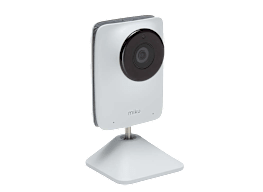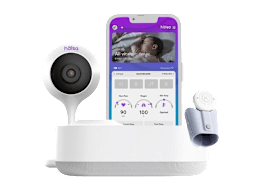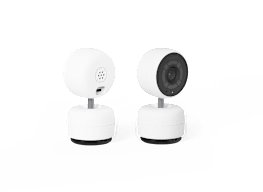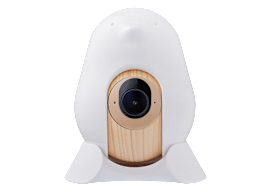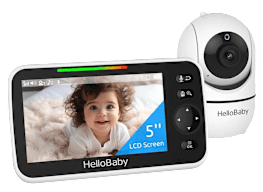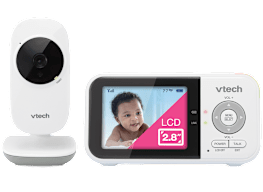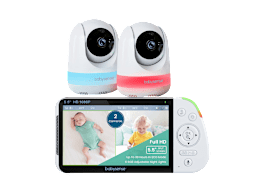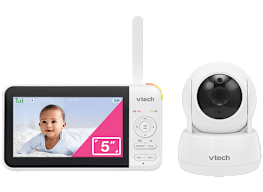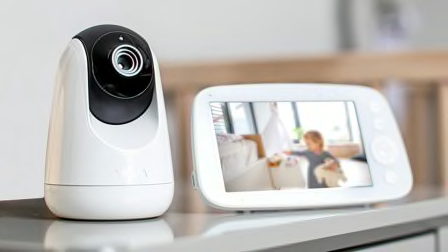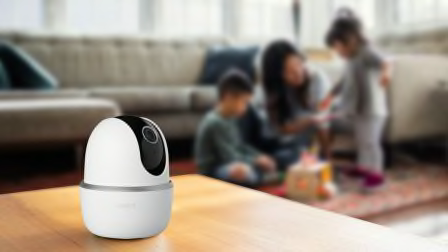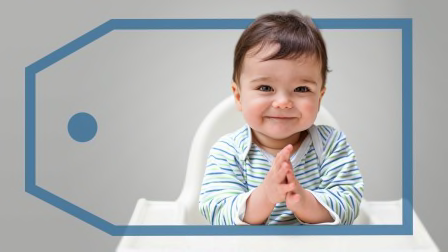Most Babies Don't Need a Wearable Breathing Monitor, Doctors Say
Wearable baby health monitors like the Nanit or Owlet are popular among parents, but some experts caution that these devices can miss genuine issues and cause false alarms
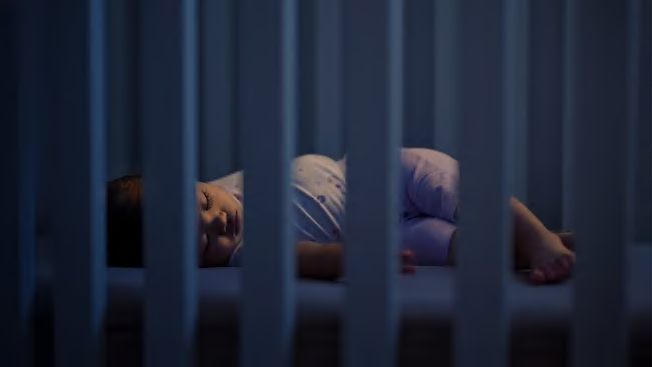
When my son was just under a year old, he was hospitalized for bronchiolitis, an infection of the lungs common in babies. He was so sick that he was sluggish and tearful and had ceased eating and drinking almost entirely. Most terrifyingly, with each exhalation, he uttered a little moan, which our pediatrician informed us was a reflection of his struggle to breathe.
It was the first of many breathing-related hospitalizations that winter. So much of those months has faded, overshadowed by the vivid memories of my child’s cries while being suctioned, the creak and rattle of the tall metal crib with the drop sides (yes, they still have those in hospitals), the hard, uncomfortable couch where I attempted to sleep with one eye anxiously staring at my desperately sick son. But one memory shines more intensely than others: the beep of the alarms, which so frequently sounded that I sometimes had to call a nurse to turn them off.
Those alarms kept me up all night long. More agonizing was that they kept my son awake when he needed to sleep. In theory, they indicated that something was wrong (which of course, we already knew—we were in the hospital), but just as often, they indicated that a sensor had come unattached from my squirmy baby’s body. The frequency of the alarms was met by a noticeable lack of urgency from the hospital staff—the constant beeping seemed to reflect an excessive vigilance, not a sense of real emergency. If anything, the beeping just made us all anxious and tired.
- 5 Concerns With Infant Health Tracking Devices: They're Largely Unregulated They Can't Diagnose They're Not Proven They're a Distraction From What Works They Can Create False Alarms
5 Concerns With Infant Health Tracking Devices
1. They’re Largely Unregulated
There’s neither good research on nor much regulation around claims the device companies can make about their products, says Joanna Parga-Belinkie, MD, a neonatologist at Children’s Hospital of Philadelphia (CHOP). The FDA’s notice to parents warns that “many infant monitors currently sold over-the-counter (OTC) for vital sign monitoring do not have FDA marketing authorization, meaning the FDA has not evaluated the safety and effectiveness of those devices.” We reached out to the FDA for comment on the agency’s oversight of these products and any next steps and received an email that responses are delayed because of the government shutdown.
The lack of regulation is, unfortunately, an all-too-common problem in products marketed to parents of babies and children. “All parents want to keep their baby safe, and they might not realize that when a company makes health and safety claims about their products, the government may not have reviewed and approved those claims,” says Gabe Knight, senior safety analyst at CR. “Health tracking devices for babies may provide some reassurance, but right now there’s no evidence that they have any tangible safety benefits.”
2. They Can’t Give Diagnoses or Actionable Health Information
Baby monitor companies make broad claims about what their health tracking devices can do for caregivers and babies. One popular product, the Nanit Breathing Band, an accessory for the Nanit Pro Baby Monitor, is claimed to detect “breaths per minute (BPM) as well as their daily/weekly/monthly averages.” It has a warning that its product “is not intended to diagnose, treat or cure any disease or other condition, including but not limited to, Sudden Infant Death Syndrome (SIDS)” and may cause false positive and false negative readings. Nevertheless, the product marketing says it “analyzes subtle movements of this pattern using smart algorithms which can detect your baby’s breathing motion and alert you if no Breathing Motion is detected in their crib.” Hälsa Baby says its All-in-One Wellness Monitor “displays heart rate, oxygen saturation levels, skin temperature variation and sleep patterns in real time,” while Miku claims its Pro Baby Monitor gives “powerful and actionable insights on your little one’s overall health and development.” Hälsa Baby and Miku have disclaimers that they’re not intended to diagnose, prevent, or cure health conditions.
None of these products clearly indicate what, exactly, caregivers are supposed to do with this information if they’re not, in fact, intended to treat or cure any disease or other condition. Hälsa Baby, Miku, and Nanit did not respond to multiple requests for comment.
“Today’s consumer monitors have appealing designs: sleek apps, wireless sensors, user-friendly interfaces, but the technology behind them isn’t medical-grade,” says Christopher Bonafide, MD, a hospitalist at CHOP. Parents may have anxiety and use the monitors for peace of mind, he says, “but it’s important to recognize that this sense of security may be false comfort. Because these devices can miss true problems or cause false alarms, they can actually increase worry and lead to unnecessary ER visits.”
3. They’re Not Proven
Research into these devices—considering that they’re a relatively new consumer category—is still minimal. A recent study (financially supported, in part, by Owlet) involving 66 preterm infants found low sensitivity for bradycardia: In other words, it missed instances of slow heart rate in infants. An editorial commenting on the research, written by two researchers who were not directly involved in the study (though one has received speaking fees from a medical tech company that makes a baby monitor and a drug company), called the study’s results “worrying,” noting that “for otherwise healthy infants, we consider electronic home monitoring a useless and potentially dangerous practice.” The authors write that the monitors may provide false reassurance by convincing parents their child is healthy when in fact they are not, or conversely, send families to the emergency room when there’s no need.
Another study, published in 2025, investigated online reviews of vitals-tracking baby monitors. It found that parents reported better sleep and decreased anxiety when the devices worked well, but that poor device performance disrupted the baby’s sleep and increased parental stress and anxiety. And though many of these products counsel users not to use these devices for making medical decisions, the study found that some users did so anyway. Many users explicitly called out their fear of SIDS or breathing problems, though, as the American Academy of Pediatrics noted in a 2022 report on preventing infant sleep deaths, no data show that these devices reduce that risk.
According to a representative from Owlet, the company conducted clinical studies to compare Dream Sock’s vital readings with hospital-grade pulse oximeters and did clinical testing, which included babies in hospital and home environments. Owlet has been cleared by the FDA to make specific claims about its Dream Sock technology after the agency reviewed the company’s data. The company also emphasized that the use of Owlet devices is not a replacement for following safe sleep practices and encouraged parents to follow the AAP’s guidelines for safe sleep.
4. They Can Be a Distraction From What Works
Experts stress the importance of a safe sleep setup where the baby is alone, on their back, on a firm sleep surface that is bare of everything but a fitted sheet. Their concern is that using these types of baby monitors can “take the focus away from what is evidence-based and scientifically proven to help babies stay safe when they’re sleeping,” says Joanna Parga-Belinkie, the CHOP neonatologist.
She refrained from commenting on specific brands, but she did say that “you have limited energy as a parent, and do you want to spend that limited energy becoming an expert in a pulse [oximeter], or do you want to spend that limited energy getting to know your baby? Because I do think the pulse ox could distract from that,” she says. “I don’t think it’s needed in newborn care.”
Looking for a Baby Monitor That Works?
Check out the best baby monitors of the year, lab-tested by our experts.
5. They Can Create False Alarms
The experience I had that first winter at the hospital has a name, “alarm fatigue,” and it’s one of the reasons that experts caution against the use of unregulated infant health tracking devices at home, unless your child has been diagnosed with a condition that requires monitoring. “It is more likely that non-physician-guided use of continuous pulse oximeter monitoring would raise unnecessary false alarms among otherwise healthy infants,” says Eric McCollum, MD, a pediatric pulmonologist at the Johns Hopkins School of Medicine in Baltimore.
Additionally, “alarm fatigue is actually something we talk about in medicine when we’re working in the hospital, and all the alarms are going off all the time, but it’s something that parents could also experience at home,” Parga-Belinkie says. “That’s why I worry for parents—they might think they have to have [one of these monitors] based on it being marketed to them as something that’s going to improve the health of their baby, but the data doesn’t exist to suggest that the home monitoring devices really do that.”
As I write this, it’s still early in the fall season for illnesses, and so far my now almost-2-year-old hasn’t gotten sick. But I’m well-trained, now, on what to look for once he gets the sniffles, then a cough. Hopefully I won’t need to exercise these bitterly won skills. But experience interacting with my son, rather than a device, is what’s given me the confidence to face sick season with only a small amount of trepidation.

















